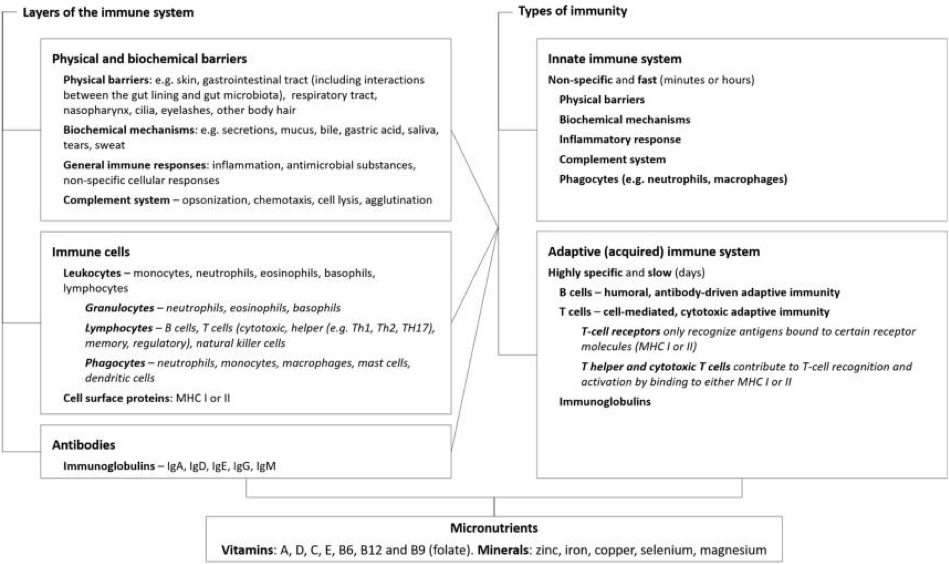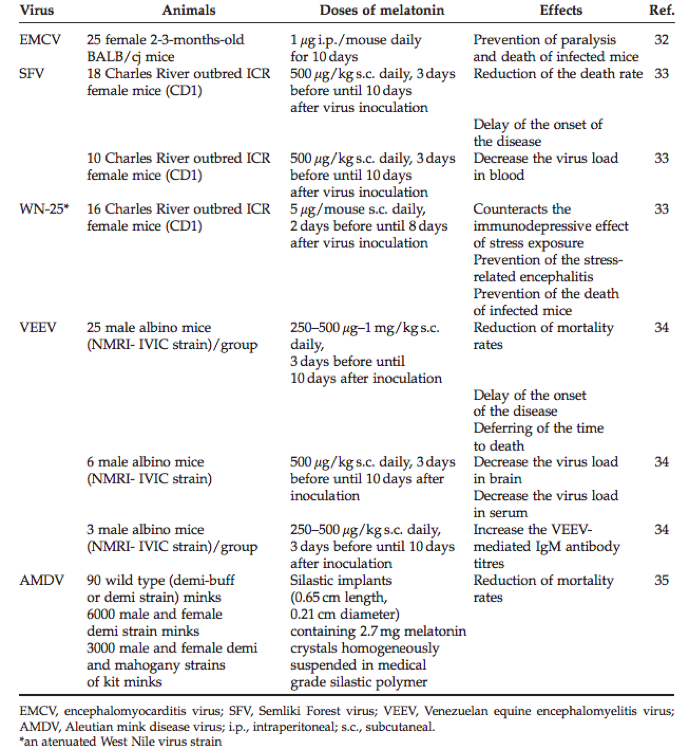In humans, coronaviruses usually cause mild respiratory infections, such as the common cold. However, in some patients it goes beyond these symptoms and leads to what is called acute lung injury and ARDS (acute respiratory distress syndrome), which may seriously affect the patient’s respiratory capacity and lead to death.
Our best defense, at this time when we don’t have a vaccine or fully tested drugs to cure the infection, is to maintain an optimized immune system. We won’t be able to avoid catching the virus if we’re exposed to it, but it’s possible to keep the viral load to a minimum. To do this, at Neolife we optimize your metabolism with the right nutritional supplements (vitamins, minerals, specific natural compounds, and probiotics) and hormone replacement therapy, using high doses of melatonin and DHEA.
Neolife Medical Team
We are dealing with a new virus to which we have no natural immunity, because we have never been exposed to it before.
In the context of this health emergency due to the coronavirus COVID-19, here at Neolife we wish to provide information to the population. Knowledge is power and knowing our “enemy” in this fight, our defense systems, and how to strengthen them certainly seems to be paramount.
In this article, we will describe our immune system and its components, show how COVID-19 behaves once it has infected a body, and how it is able to affect the invaded organism, and also review what scientific evidence tells us about what we can do at the supplement level and at the hormonal level.
Additionally, you will find a complete article on nutrition and diet written by our team of nutritional experts in the blog post titled “COVID-19: How Nutrition Affects Our Immune System“, to boost our immunity in case of the viral attack.
OUR IMMUNE SYSTEM
Let’s begin by a very summarized description of what our immune system looks like.
An immune system (IS) is the set of structures and mechanisms in an organism that allows it to maintain a balance against external attacks (pathogens, contaminants, radiation, etc.) and internal ones (cancer cells).
It is composed of a number of cells found in our fluids and tissues, which are generated in the bone marrow.
There are 2 types of immune system, the innate or nonspecific and the acquired or adaptive.
The innate system is present in almost all living beings, however simple they may be. Among the mechanisms it uses are the production of antimicrobial peptides, phagocytosis, carried out by neutrophils and macrophages, the complement system, etc. The innate IS detects signals in cells that distinguish the healthy ones from those that have been damaged by burns, radiation, viruses, bacteria, parasites, etc. The cells involved in the the innate IS are macrophages, neutrophils, dendritic cells, mast cells, eosinophils, basophils, and NK cells. These cells identify and eliminate pathogens. Innate cells are also important mediators in the activation of the adaptive IS.
The adaptive IS allows for a greater immune response, as well as the establishment of an immune memory. The adaptive immune response is specific to antibodies and requires recognition of antigens that are not its own through a process called “antigen presentation”. Adaptive IS cells are a special type of leukocytes called lymphocytes. B and T cells are the main classes of lymphocytes (1,2). There are 2 types of T cells:
- Cytotoxic T cells, which kill infected or sick cells when their receptor binds to their specific antigen in the other cell’s membrane.
- Collaborating T cells, which regulate both the innate and adaptive response.
B lymphocytes, on the other hand, generate specific antibodies after being activated by a collaborating T cell.
 THE INFECTIVITY OF COVID-19
THE INFECTIVITY OF COVID-19
Well, now that we know our immune system a little better, let’s get back to the COVID-19.
We are dealing with a new virus to which we have no natural immunity, because we have never been exposed to it before. It is a virus with a high degree of infectivity, with a mortality rate that, according to the current figures is 2-3%, but which will likely be lower once we obtain more data on the number of actual infected people (i.e., the number of deaths will remain the same, but as the number of infected increases with more testing, the mortality rate decreases).
Its high infectivity rate is due to several phenomena:
- A person may be an asymptomatic carrier during the incubation period of the disease, which may vary from 2 to 14 days.
- It can survive up to 9 days in fomites, that is, inanimate objects that can be contaminated by viruses, such as subway bars, shopping cart handles, door knobs, etc.
- It is very easily transmitted through the tiny drops we expel when we cough, sneeze, or just talk.
HOW COVID-19 ACTS IN OUR BODY
It seems that once it has entered, especially through an airway, it binds to the receptors in lung tissue. From there, it does what viruses usually do, which is to infect the cells and modify them to create more copies of itself, leading to the death of the host cell, which can also die as a result of the immune reaction that has started. When many of an organ’s cells die, their function is obviously altered.
In humans, coronaviruses usually cause mild respiratory infections, such as the common cold. However, in some patients it goes beyond these symptoms and leads to what is called acute lung injury and ARDS (acute respiratory distress syndrome), which may seriously affect the patient’s respiratory capacity and lead to death. According to the Chinese Disease Control Center, 81% of cases are mild, 14% severe, and 5% critical, of which half die.
There are essentially two roads that lead to death:
- Some people are young, with strong immune systems. For them, the problem is that the virus overstimulates their immune system, triggering a cytokine storm, which causes the person’s own immune system to attack the lungs, leading to a large release of fluids into them (ARDS). This eventually leads that person to “drown” in his or her own lung fluids.
- The second group tends to be elderly, with weakened immune systems and lungs that are already compromised by disease (COPD, emphysema, etc.). For them, the virus may further weaken the immune system, to the point of developing pneumonia, which in many cases can be severe or even fatal, if they develop ARDS, heart failure, or sepsis.
What’s this about the cytokine storm we mentioned?
A cytokine storm is triggered when the body perceives that the virus that is attacking it is stronger than it can handle with a normal response. This can happen in different ways (5):
- The virus can be so virulent that it triggers the storm directly. This overreaction will damage the lungs and other organs such as the heart, liver, or kidneys.
- The virus can be so new (as in the case at hand) that our body does not recognize it and cannot send to the best-trained defenses, the B and T cells. Instead, it sends macrophages and dendritic cells, which are powerful but aggressive, and their attack is not very targeted, which causes collateral damage. This is the path that leads healthy young people to critical stages of the disease.
- A virus, by itself, may not be strong enough to trigger a cytokine storm, but it may be strong enough to cause a secondary infection (usually pneumonia), which when combined with the initial infection is strong enough to cause the cytokine storm. Any respiratory virus, such as the flu, respiratory syncytial virus, or now COVID-19, can lead to pneumonia. That’s how the flu kills 600,000 people a year in the world. They don’t die of the flu, but from the cytokine storm triggered by a secondary infection. The elderly with weak immune systems are particularly vulnerable to this when they are infected by COVID-19, and this is how most deaths have occurred.
Therefore, our best defense, at this time when we don’t have a vaccine or fully tested drugs to cure the infection, is to maintain an optimized immune system. We can’t avoid catching it if we are exposed to the virus (as we said, until now no one has ever been exposed to it and no one has antibodies against this new virus), but the viral load may be kept to a minimum, so that it does not progress to a cytokine storm, pneumonia, or ARDS.
WHAT CAN WE DO TO BOOST OUR IMMUNITY?
A proper nutritional and hormonal balance will keep our immune system functioning properly, but also keep in mind that getting enough sleep also helps, while stress has the opposite effect.
We can boost our immune system with supplements and natural products derived from traditional medicines, hormone replacement therapy, a good diet, and good habits. In this article, we’ll tell you more about the first two, supplements and hormone replacement therapy.
1. Vitamins and minerals
Immune support through micronutrients is historically based on vitamin C deficiency and its supplementation to prevent scurvy. Since then, it has been established that the complex and integrated immune system needs multiple specific micronutrients, including vitamins A, D, C, E, B6, and B12, as well as folate, zinc, iron, copper, and selenium, which play a vital, often synergistic role in each stage of the immune response. Obtaining adequate amounts of these vitamins, minerals, and trace metals is essential to ensure the proper functioning of the physical barriers against infections and the immune cells; however, the daily intake of these micronutrients needed to support immune function may be higher than the recommended daily allowance (RDA). Certain populations have inadequate intakes of these nutrients, and there are situations such as the infection itself and stress, which may cause their levels to drop further, and thus modify the amount that needs to be received. Several micronutrients may be in deficit, and even values in the low range of normality may affect immunity. Although there is conflicting data, the available evidence indicates that multi-micronutrient supplementation with immune support functions is able to modulate immune system function and reduce the risk of infection. The micronutrients with the strongest evidence for immune system support are vitamins C and D and zinc (1).
2. Specific supplements that help boost your defenses
There are also natural products that Western medicine has learned from Asian medicine, which it has researched and standardized. Thus, for example, plants, like the echinacea, have immunostimulant properties: they boost the production and activity of lymphocytes and macrophages, increase the production of interferon, which improves the response to viral infections, reduce the symptoms of respiratory infections, etc.(3).
Mushrooms like Reishi, Shiitake, or Maitake also produce effects on the immune system (4). Reishii is known for its immunostimulant and immunomodulatory properties. Shiitake activates macrophages, T cells, and NK cells, and Maitake has been shown to stimulate the innate and adaptive IS, even in cancer patients.
3. Probiotics and their various benefits to the immune system
The use of probiotics deserves its own section, as they promote a healthy immune system and lower the incidence of colds, allergies, and eczema by boosting the immune system. The latest studies show that these beneficial bacteria account for 80-90% of our immune function. They have multiple functions: they are not only a barrier to prevent the entry of microorganisms, but they also kill pathogens such as bacteria, viruses, fungi, and parasites, and act as immunomodulators, producing substances such as lactoferrin and B vitamins. Scientific studies have shown that supplementing with probiotics prevents recurrent pharyngitis and tonsillitis. Another study in children from age 3 to 5 showed that the incidence of fevers was reduced by 53%, as well as cases of cough by 41% and cases of catarrhal rhinitis by 28%. Also, the use of antibiotics in these children fell by 84%.
Do we only have healthy flora in our gut? No, it’s also in the mouth, nose, skin, urinary tract, vagina, and lungs; which brings us back to the COVID-19 again. Obviously the bacterial strains we find in the lungs are very different from those found in the intestine, but we know that the signals from the gut bacteria reach the lung while maintaining this first line of defense against pathogens. When mice with a healthy gut flora were inoculated with the influenza virus, 80% survived, compared to 33% who did so by having an antibiotic-altered flora (6,7).
Therefore, if you want to have a strong immune system, you need a good probiotic supplement and be careful with antibiotics.
4. Melatonin at high doses and its protective effect
Melatonin is a molecule with multiple and important functions. Numerous clinical trials have examined its usefulness in different fields of medicine. Its effectiveness has been shown to prevent cell damage in acute states (sepsis and asphyxiation in newborns) and chronic states (metabolic and neurodegenerative diseases, cancer, inflammation and aging).
The beneficial effects of melatonin can be explained by its powerful antioxidant properties, and because it is an antioxidant enzyme inducer, apoptosis regulator or cell death, and immune system stimulator. These effects support its use in viral infections that are often associated with inflammation-induced injury and increased oxidative stress. The following table shows some of the many studies examining its usefulness in protecting us against viral infections (8,9).

Various studies have been conducted in humans to show these properties. Its virtual absence of toxicity has allowed its use to be considered in combination with conventional therapies.
Gitto et al. used melatonin to treat newborns with severe sepsis with very significant improvement in mortality. Another study for the treatment of herpes simplex improved the cure rate to 7 days compared to the usual treatment with aciclovir.
Moreover, its beneficial effects have been shown in combination with common drugs improving the results obtained with its use alone.
Earlier this week, when faced with this contingency of the coronavirus pandemic, Dr. Darío Acuña, Europe’s leading expert on melatonin, has informed us that an emergency trial with high injectable doses of melatonin will be conducted to combat COVID-19, and he recommends increasing oral doses of this hormone throughout this period as an endogenous protective mechanism for all of those who are already taking melatonin.
6. DHEA
Another hormone that we manage daily in consultation with our patients and which has fascinating properties is dehydroepiandrosterone (DHEA). We use it in several cases and for its important cardiovascular effects (it improves all manifestations of metabolic syndrome, including central obesity, atherogenic dyslipemia, high blood pressure, insulin resistance, and prothrombotic state), aid in bone health (it increases bone density), brain health (it modulates response to stress, helps memory, controls sleep, and improves mood and anxiety states), sexual health (it improves erectile dysfunction, satisfaction during intercourse, sexual desire, and orgasmic function), autoimmune diseases (it has shown beneficial effects in the management of ulcerative colitis and Crohn’s disease), etc.
As for immune function, the issue that concerns us most today, studies show that whether it is directly or via conversion to other metabolites, it evokes important responses from many components of the immune system. It has powerful effects on cytokine production, lymphocyte proliferation, it increases T and NK cells… It has even been shown to have an adjuvant effect on vaccination, improving the production of protective antibodies (10).
Here at Neolife, we know that your immune system is very important for your current and future health. Therefore, we optimize your metabolism and hormonal axes, and help with supplements, nutrition, and habits to ensure your immune system’s optimal functioning.
BIBLIOGRAPHY
(1) Gombart AF, Pierre A, Maggini S. A Review of Micronutrients and the Immune System-Working in Harmony to Reduce the Risk of Infection. Nutrients. 2020;12(1):236. Published 2020 Jan 16. doi:10.3390/nu12010236
(2) Janeway CA Jr, Travers P, alport M, et al. Immunobiology: The Immune System in Health and Disease. 5th edition. New York: Garland Science; 2001. The components of the immune system.
(3) Isbaniah F, Wiyono WH, Yunus F, Setiawati A, Totzke U, Verbruggen MA. Echinacea purpurea along with zinc, selenium and vitamin C to alleviate exacerbations of chronic obstructive pulmonary disease: results from a randomized controlled trial. J Clin Pharm Ther. 2011 Oct;36(5):568-76.
(4) Lee, Kuo-Hsiung et al. “Recent progress of research on medicinal mushrooms, foods, and other herbal products used in traditional Chinese medicine.” Journal of traditional and complementary medicine vol. 2,2 (2012): 84-95.
(5) Tisoncik JR, Korth MJ, Simmons CP, Farrar J, Martin TR, Katze MG. Into the eye of the cytokine storm. Microbiol Mol Biol Rev. 2012;76(1):16–32. https://www.ncbi.nlm.nih.gov/pmc/articles/PMC3294426/
(6) Gregory J. Leyer, Shuguang Li, Mohamed E. Mubasher, Cheryl Reifer, Arthur C. Ouwehand, “Probiotic Effects on Cold and Influenza-Like Symptom Incidence and Duration in Children.” Pediatrics 124 No. 2 August 1, 2009 pp. e172 -e179. https://pediatrics.aappublications.org/content/124/2/e172.full.pdf+html
(7) Bradley KC, Finsterbusch K, Schnepf D, et al. Microbiota-Driven Tonic Interferon Signals in Lung Stromal Cells Protect from Influenza Virus Infection. Cell Rep. 2019;28(1):245–256.e4. https://dx.doi.org/10.1016/j.celrep.2019.05.105
(8) Boga JA, Coto-Montes A, Rosales-Corral SA, Tan DX, Reiter RJ. Beneficial actions of melatonin in the management of viral infections: a new use for this”molecular handyman”? Rev Med Virol. 2012 Sep;22(5):323-38.
(9) Sánchez-Barceló EJ, Mediavilla MD, TanDX, Reiter RJ. Clinical uses of melatonin:evaluation of human trials.Current Medicinal Chemistry2010;17: 2070–2095..
(10) Prall, S. P., & Muehlenbein, M. P. (2018). DHEA Modulates Immune Function: A Review of Evidence. Vitamins and Hormones, 125–144.
